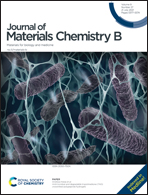Applications of 3D bioprinting in tissue engineering: advantages, deficiencies, improvements, and future perspectives
Abstract
Over the past decade, 3D bioprinting technology has progressed tremendously in the field of tissue engineering in its ability to fabricate individualized biological constructs with precise geometric designability, which offers us the capability to bridge the divergence between engineered tissue constructs and natural tissues. In this work, we first review the current widely used 3D bioprinting approaches, cells, and materials. Next, the updated applications of this technique in tissue engineering, including bone tissue, cartilage tissue, vascular grafts, skin, neural tissue, heart tissue, liver tissue and lung tissue, are briefly introduced. Then, the prominent advantages of 3D bioprinting in tissue engineering are summarized in detail: rapidly prototyping the customized structure, delivering cell-laden materials with high precision in space, and engineering with a highly controllable microenvironment. The current technical deficiencies of 3D bioprinted constructs in terms of mechanical properties and cell behaviors are afterward illustrated, as well as corresponding improvements. Finally, we conclude with future perspectives about 3D bioprinting in tissue engineering.



 Please wait while we load your content...
Please wait while we load your content...